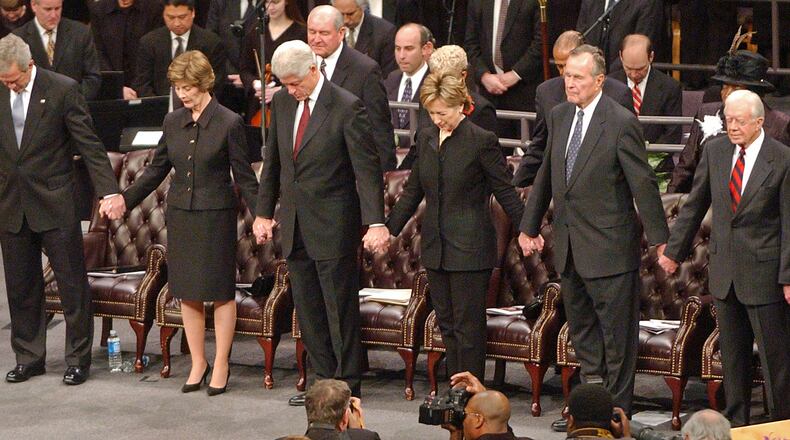Published Feb. 8, 2006
In the black church tradition that spawned Coretta Scott King, there is an old expression called “having church.” The expression describes those electric moments that bubble up unexpectedly during a worship service where people shed their inhibitions.
King’s funeral on Tuesday was filled with those unexpected moments of theater.
The service was tightly scripted and formal when it began. Four U.S. presidents attended. The Atlanta Symphony Orchestra performed. The funeral program even displayed a lengthy acknowledgement of corporate sponsors and 73 “honorary pallbearers.”
But the selection of speakers, Scriptures and song allowed for spontaneity to break through. At moments, the service seemed like it had been transformed into an old church revival.
The funeral organizers had a tough task: portraying King’s public persona while revealing a bit of her private side. People know about her outward image, but organizers gave her more humanity by showing some rare photographs of King, her parents and her childhood growing up on an Alabama farm feeding hogs and milking cows.
Yet, at other times, the funeral resembled a performance. Speakers droned on. People applauded.
Thomas Long, the Bandy Professor of Preaching at Emory University, said a funeral can turn into a performance when a famous person dies and dignitaries are invited.
“The media event can overcome the ritual event,” Long said. “It can become the Oscars with a dead person present.”
Long said conflicting storylines also can surface at the funeral of a well-known person.
“We saw this with [Ronald] Reagan’s funeral --- there was a collision of stories,” Long said. “In the Reagan funeral, there was a story of a Christian going to God. There was also the story of a Caesar being buried. Sometimes those stories were in conflict with one another.”
But funeral organizers managed to blend different sides of King with their selections of song and Scriptures.
The service featured contemporary gospel anthems such as Donnie McClurkin’s “Stand,” classics such as Handel’s “Messiah” and a Negro spiritual called “His Eye is on the Sparrow.” Scriptural selections included Psalms 139:1-10 and Romans 8:28-39. Both passages talk about the inescapable presence of God. Both the high-church tradition and the black church tradition were represented.
Yet it was the unscripted moments so crucial to the black church tradition that provided some of the funeral’s liveliest moments.
Author Maya Angelou hushed the audience when she started her remarks by singing a spiritual. And former Atlanta Mayor Andrew Young joked that black church services may last long, but people feel better afterward.
Gary Laderman, author of “Rest in Peace: A Cultural History of Death and the Funeral Home in Twentieth-Century America,” said there was a larger story being told at King’s funeral that wasn’t announced in the program. As with the death of Rosa Parks, people are saying goodbye to the generation of civil rights icons they grew up with, he said.
“This is a sign of generational change,” Laderman said. “These are folks who didn’t die young. It’s really identifying with a generation that is long past.”
About the Author
The Latest
Featured


